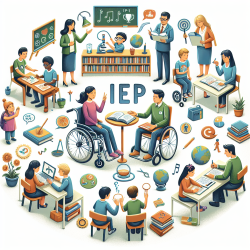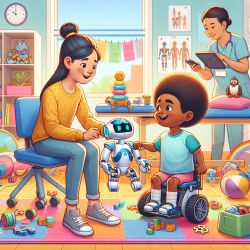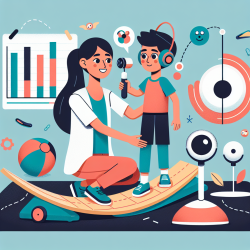Welcome to the World of IEPs!
Individualized Education Programs (IEPs) are essential tools in the realm of special education. They ensure that each child with a disability receives a tailored educational experience designed to meet their unique needs. But what exactly is an IEP, and how does it work? Let's dive into this topic in a fun and easy-to-understand way!
What is an IEP?
An IEP is a written plan developed for a public school child who is eligible for special education. It’s a collaborative effort involving teachers, parents, school administrators, and, when appropriate, the student. The goal is to create a program that helps the child progress in the general curriculum and achieve their educational goals.
The IEP Team: Who's Involved?
The IEP team is a group of people who work together to develop the child's educational plan. The team typically includes:
- Parents or guardians
- At least one regular education teacher
- At least one special education teacher
- A school district representative
- An individual who can interpret evaluation results
- Others with knowledge or special expertise about the child, including related services personnel
- The student, when appropriate
Key Components of an IEP
Each IEP must include specific information to ensure the child's educational needs are met. These components are:
- Current Performance: A description of how the child is doing in school and how their disability affects their progress.
- Annual Goals: Measurable goals that the child can reasonably achieve within a year.
- Special Education and Related Services: A list of services the child will receive, including any necessary modifications or supports.
- Participation with Nondisabled Children: An explanation of the extent to which the child will not participate with nondisabled children.
- Participation in State and District-wide Tests: Any necessary modifications for test-taking or an explanation if the child will not participate in certain tests.
- Dates and Places: When and where services will be provided.
- Transition Services Needs: Starting at age 14, a statement of the courses the child needs to take to reach post-school goals.
- Measuring Progress: How the child's progress toward annual goals will be measured and how parents will be informed.
Reviewing and Revising the IEP
The IEP team must review the child's IEP at least once a year to ensure the child is achieving their goals. However, revisions can occur more frequently if needed. Parents and school staff can request a meeting to discuss changes if the child is not making expected progress or if new needs arise.
What if Parents Disagree?
Parents have the right to challenge decisions about their child's education. Options include discussing concerns with the IEP team, requesting mediation, or filing a complaint with the state education agency. The goal is to work collaboratively to find the best solutions for the child.
For more information, please follow this link.










